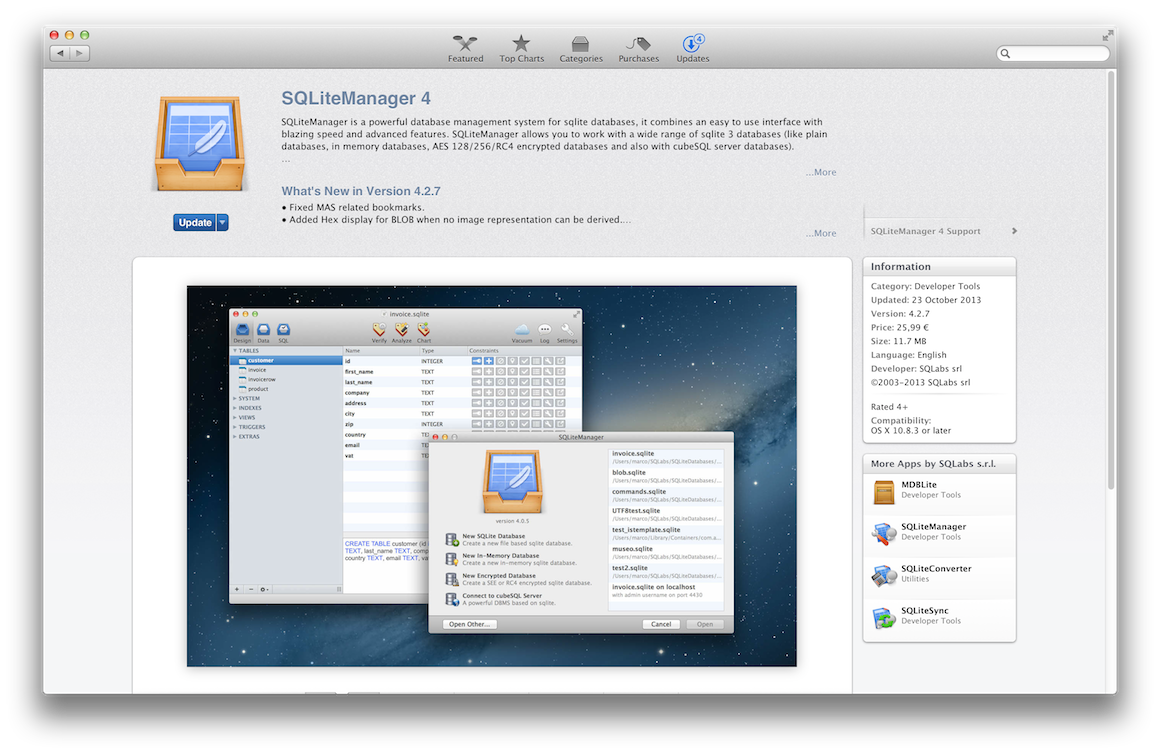

There are drivers on NuGet and things like DB Browser to easily manage it. How are you saving the data? To a database of some sort? Get exposed to SQL. Keep building stuff, CRUD applications are good. What software skills do you think will be the most in demand a year or two from now? You might could get it from formhistory.sqlite in your profile folder. The cool thing about Sqlite is that it is simply a database engine, and you can use python or one of the many available desktop programs to access it. Imho it's a great balance between being able to automate stuff with python, and still being able to manually browse through your data. Moving away from using excel as a databaseįor simular applications, I've used Sqlite databases in the past. Load 7 more related questions Show fewer related questions Sorted by: Reset to default Browse other questions tagged.
#Sqlitemanager chrome how to
You can open them up in any SQLite3 database browser (I use DB Browser for SQLite). 2 How to dump and convert binary blob for an Indexed DB sqlite database from Firefox extension.

I don’t have a write-up at the moment, but the dictionaries are all SQLite3 databases. Jyut Dictionary - Cantonese dictionary for Windows, Mac, and Linux sqlite file to get it to open in the program.). (You might be able to just double click the. Then right click your _settings sqlite "open with." and select or find "DB Browser for SQLite".

#Sqlitemanager chrome install
A good one is "DB Browser for SQLite" () Download and install it. It is a binary SQL file so you need a tool. You can instead try to edit the _settings.sqlite. Generating new images for parameter scan simulations Here’s where you can the script sqlite3_reader-favicons.py. If you would like to it done in python take a look at the python script i demonstrated at CEIC last year. I’m sure you can see the value in reviewing these SQLite databases. As you can see the date has converted nicely. It does some additional stuff like convert the last_updated date to a readable format. This is a query from one of my Python scripts. On icon_mapping.icon_id = favicon_bitmaps.icon_id Inner join favicon_bitmaps on icon_mapping.icon_id = favicon_bitmaps.icon_idĭatetime(((favicon_bitmaps.last_updated -11644473600000000)/1000000), Inner join icon_mapping on favicons.id = icon_mapping.icon_id Tables: favicon_bitmaps, favicons and icon_mapping Basic Query select favicons.url, The icon_mapping table keeps the page_url (this makes finding which ones are still valid). There are three tables of interest, the favicons_bitmaps, favions and icon_mapping. I’m only going to use a few columns for this example.īasic Query: select distinct creation_utc, host_key, last_access_utc, from cookies This is good for knowing where someone went, how often and the last time they may have visited the site. It stores the first and last time a cookie for a website was accessed. The “ Cookies” databaseĬookies is pretty self explanitory in this case. If you want to run the queries I provided try using the Firefox SQLiteManager Add-On or SQLiteman otherwise you can just view a database in SQLiteDiver very easily. In this post I’m going to talk about two databases Chrome uses the Cookies and the Favicons database. A byproduct of course is useful information for an examiner. Today I’m posting some research I did early last year related to querying Chrome Web Browser SQLite databases which is how Chrome stores most of the useful information that makes for a great browsing experience.


 0 kommentar(er)
0 kommentar(er)
